PC Club Enpower ENP660: Back to School
by Jarred Walton on August 14, 2007 7:00 AM EST- Posted in
- Laptops
Power Saving Analysis
One aspect of Intel's Santa Rosa platform that we haven't specifically looked at is their new power saving features. Previous Intel mobile processors were able to reduce CPU clock speeds and voltages, but the Santa Rosa platform also allows the front side bus and memory to change speeds. This is particularly important considering the Santa Rosa platform also adds support for a faster front side bus. We used CPU-Z to highlight how this plays out in practice.
At idle, the PC Club ENP660 runs the CPU at 800 MHz using a 400 MHz FSB. The CPU also runs at 0.900V. Memory is run at DDR2-333. Compare this with what the system uses under load:
Besides the processor jumping up to 1.8GHz and voltage increasing to 1.175V, the FSB and memory speeds double. How much of the difference this makes overall is difficult to say, but maximum performance definitely goes up without seriously impacting battery life.
One of the interesting side effects of the changing multipliers, memory speeds, front side bus speeds, and ratios is that there's a bit more variance in bus and memory speeds. At idle the system will run in a minimum performance mode, while at load it will run at maximum performance. It's under light to moderate loads that we see unusual numbers. At times we even see the CPU exceed its normal 1.80GHz clock speed, and likewise the memory runs a little faster than DDR2-667. However, this only occurs for short periods of time and the system stability was never compromised by the changing frequencies.
The Santa Rosa platform does allow one CPU core to exceed the rated clock speed by one bin, which can be useful in single-threaded applications. We're not sure that's what we're seeing here, however, as the CPU multiplier never went above 9X. It's the FSB exceeding the rated 333 MHz base speed that's creating this overclock. These "speed bumps" were also short-lived, lasting less than one second and occurring infrequently.
One aspect of Intel's Santa Rosa platform that we haven't specifically looked at is their new power saving features. Previous Intel mobile processors were able to reduce CPU clock speeds and voltages, but the Santa Rosa platform also allows the front side bus and memory to change speeds. This is particularly important considering the Santa Rosa platform also adds support for a faster front side bus. We used CPU-Z to highlight how this plays out in practice.
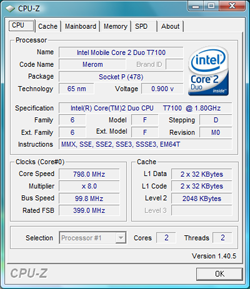 |
 |
At idle, the PC Club ENP660 runs the CPU at 800 MHz using a 400 MHz FSB. The CPU also runs at 0.900V. Memory is run at DDR2-333. Compare this with what the system uses under load:
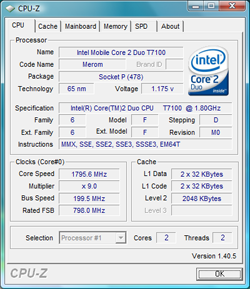 |
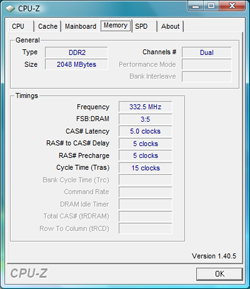 |
Besides the processor jumping up to 1.8GHz and voltage increasing to 1.175V, the FSB and memory speeds double. How much of the difference this makes overall is difficult to say, but maximum performance definitely goes up without seriously impacting battery life.
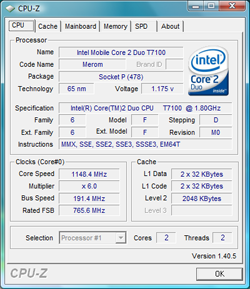 |
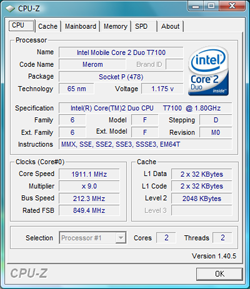 |
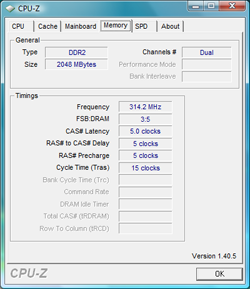 |
 |
One of the interesting side effects of the changing multipliers, memory speeds, front side bus speeds, and ratios is that there's a bit more variance in bus and memory speeds. At idle the system will run in a minimum performance mode, while at load it will run at maximum performance. It's under light to moderate loads that we see unusual numbers. At times we even see the CPU exceed its normal 1.80GHz clock speed, and likewise the memory runs a little faster than DDR2-667. However, this only occurs for short periods of time and the system stability was never compromised by the changing frequencies.
The Santa Rosa platform does allow one CPU core to exceed the rated clock speed by one bin, which can be useful in single-threaded applications. We're not sure that's what we're seeing here, however, as the CPU multiplier never went above 9X. It's the FSB exceeding the rated 333 MHz base speed that's creating this overclock. These "speed bumps" were also short-lived, lasting less than one second and occurring infrequently.










11 Comments
View All Comments
Pol Newman - Wednesday, October 21, 2020 - link
You need an expensive laptop to study well